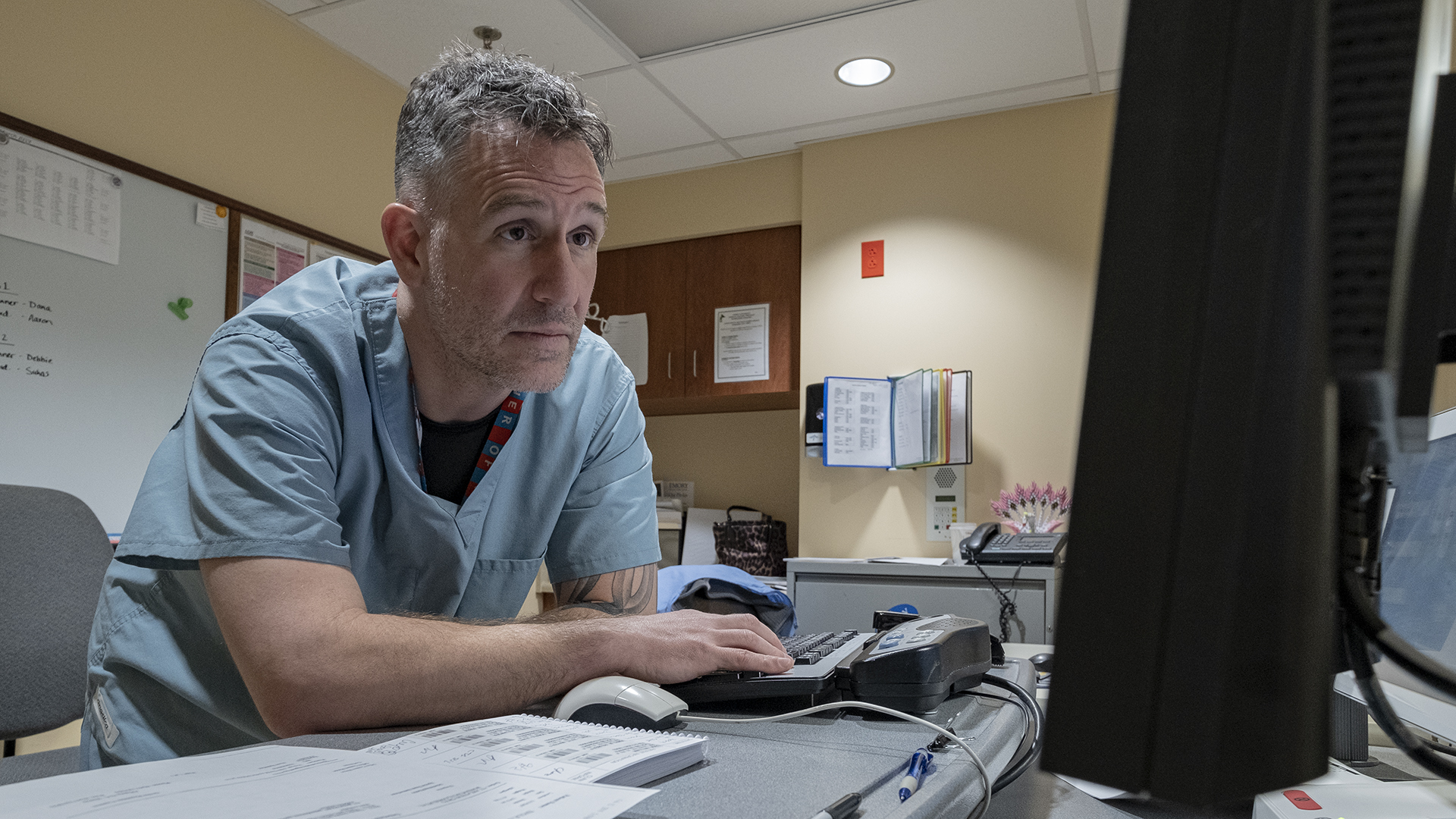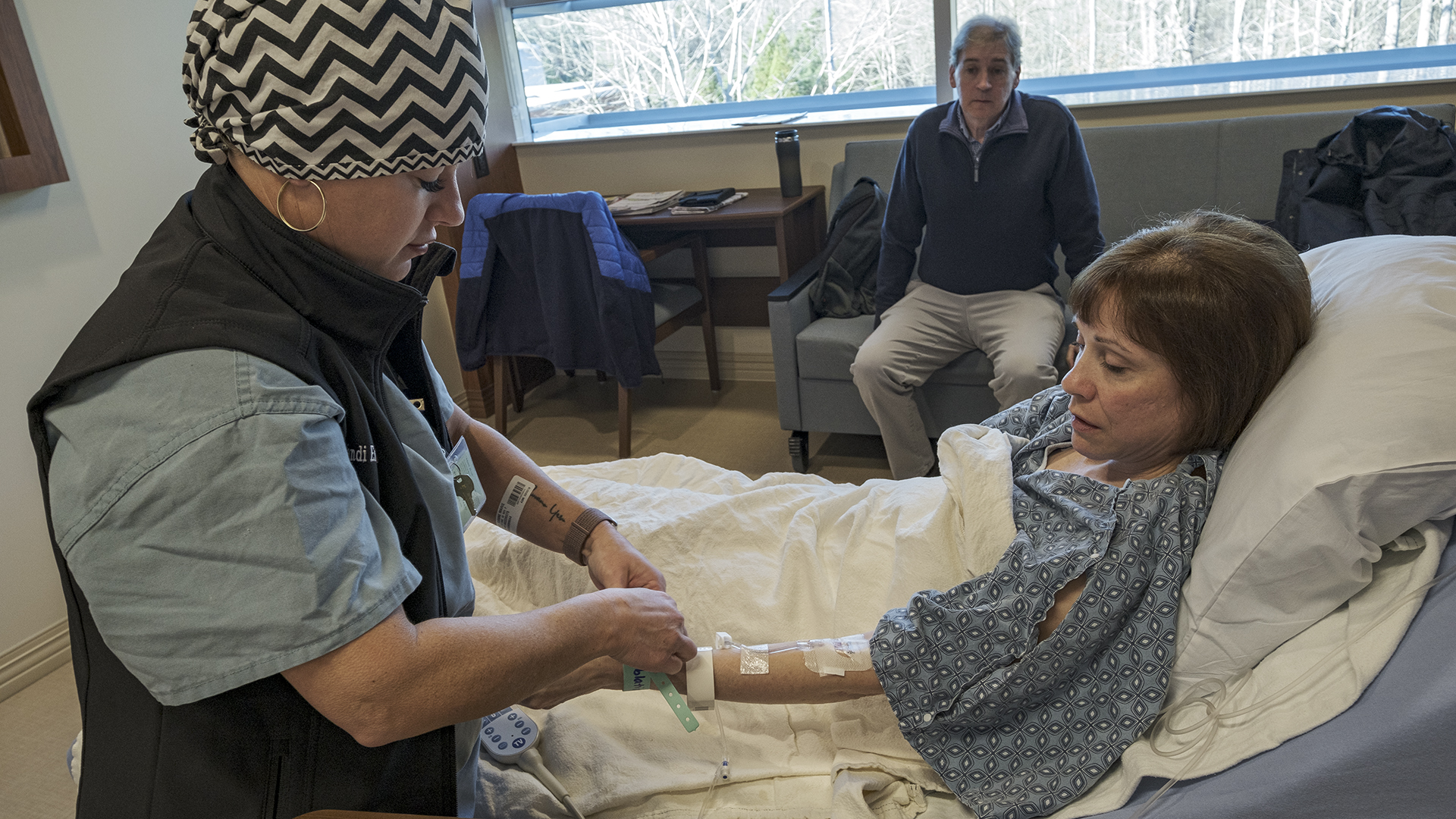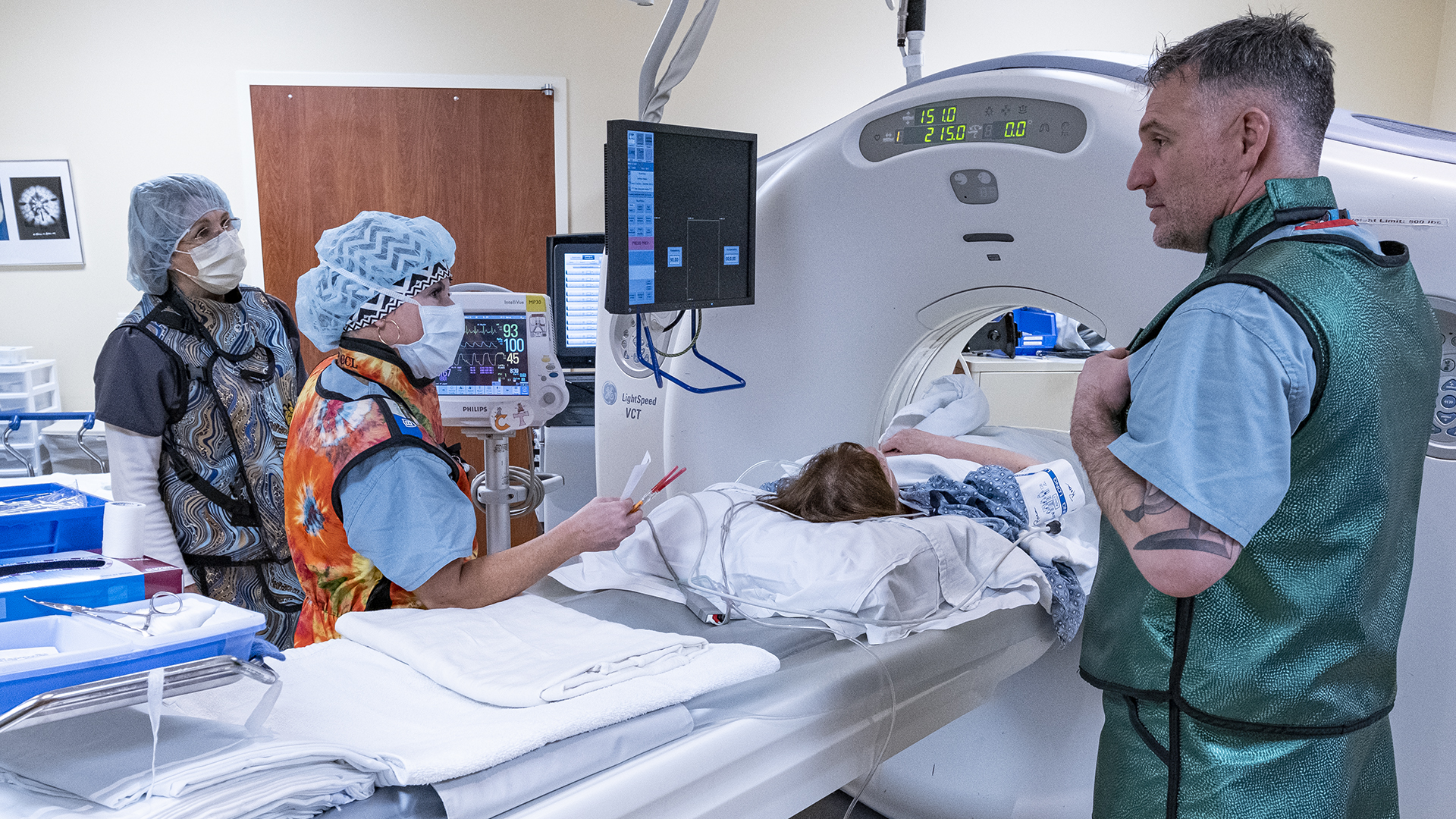Freezing Away the Pain
Nov. 19, 2019
By Sam Marie Engle, MS, MHS
Pain.
It was always there. Whether I stood or sat, stretched or stayed still, wore heels or flats, ran or walked, the pain was always there.
It started after I had surgery in 2015 for severe endometriosis and pre-cancer. Unfortunately, my body went crazy and produced all this scar tissue, or fibrosis. A second surgery to remove the fibrosis only made it worse: more fibrosis formed and not just on organs. Nerves also got trapped by those tight bands, causing them to relentlessly scream.
The doctors ruled out additional surgery: excising the fibrosis probably would result in organ damage plus trigger more fibrosis production. I’m allergic to aspirin and other nonsteroidal anti-inflammatory drugs like ibuprofen, so those were out. I didn’t want to become an overdose statistic, so I quickly abandoned opioids (they didn’t help, either). Instead, I took acetaminophen; antidepressants with pain-relieving properties; and gabapentin, which treats nerve pain. I also had ten cortisone injections, fifty-two acupuncture sessions, and months of physical therapy. I even applied lidocaine numbing patches, roll-on analgesics, and essential oils. Nothing stopped the pain.
I couldn’t sleep, couldn’t exercise. My hair started falling out and my quality of life was terrible. Faced with a future full of pain, I seriously considered ending my life.
And then, the gynecologist suggested freezing my nerves.

Of course! I had written articles about Dr. J. David Prologo’s use of image-guided cryoablation to treat neuralgias and phantom limb pain, so I knew it worked.
Although I live inside the perimeter, I eagerly trekked up to Emory Johns Creek Hospital for a clinical consultation. After reviewing my medical record and imaging studies, Dr. Prologo ran some tests. When he said I was a good candidate for image-guided cryoablation, I cried.
The patient-centered approach to care in the Radiology Observation Care Unit (ROCU) at Emory Johns Creek was evident as soon as I arrived for the procedure. It really was comforting to have one nurse, Mandi Irwin, RN, provide all my nursing care before, during, and after cryoablation. Mandi also coordinated with the other members of my care team to provide a continuity of care that relieved my anxiety.

Multiple safety checks also reassured me. We again reviewed my medical history and list of meds to make sure nothing might affect treatment. Nurse Sheila Hickey separately explained the written treatment plan, expected outcomes, and potential complications as part of the consent process. Her descriptions matched what Dr. Prologo told me earlier, so I confidently consented to treatment.
In the procedure room, I met Debbie Jones, the talented technologist who took the CT images Dr. Prologo needed to guide him.
The team assembled for Call to Order. Dr. Prologo insisted I participate, too, which made me feel like I wasn’t just a body on the table. After confirming my identity, I told them what procedure I thought I was having and why. The team also verified who was responsible for what over the next hour or so. What a relief we all agreed!
After the first dose of sedative I felt woozy but still conscious. Mandi kept talking to me, letting me know what was happening and asking me how I was. So far so good, I said, and then…
I felt a sharp jab. I told Mandi it really hurt. She explained the pain was good because it meant Dr. Prologo hit the right nerve and was going to start freezing it. She administered more medication and assurance. The last thing I remember was seeing a bright ball on the imaging screen.

I found out later that was the argon gas ball coming from the tip of the probe Dr. Prologo used to freeze the targeted nerves. I’m amazed even now by how precisely interventional radiologists like Dr. Prologo can target treatment with minimal impact on surrounding tissues.
As I prepared to leave, Dr. Prologo promised me I wouldn’t need anything stronger than acetaminophen and an icepack to manage the post-procedure pain. I was skeptical but he was right. It was sore for about two weeks but nothing compared to the pain I suffered for three years.
It’s been seven months since my cryoablation and the pain is gone. I’m biking and hiking through the woods and running up to 4 miles at a time on the hilly roads in my neighborhood. I’m sitting at my desk, working, and taking car trips without feeling like someone’s jabbing an ice pick into my abdomen. I stand, sit, move, and even sleep just like a normal person. My quality of life is so much better—all without medications.
Thank you, Dr. Prologo and the Emory Johns Creek Hospital ROCU team, for giving me back my life.



